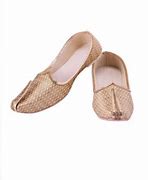
Can You Use a TF Card on a Dual Sim Phone?
Many modern smartphones, including the HONOR 90(up to 512GB storage), offer hybrid SIM card slots that accommodate both SIM cards and TF cards. This means you can simultaneously enjoy dual SIM functionality while expanding your device's storage using a TF card. The HONOR exemplifies this trend, enabling users to harness the power of two SIM cards and a TF card concurrently.
There you have it – a tour of everything you need to know what is a TF Card and SD Card! Both cards stand as remarkable testaments to human innovation, addressing our insatiable appetite for data storage and mobility. While TF cards excel in compact versatility, SD cards offer diversity and specialized performance. Consider your needs, budget, and device compatibility when choosing between the two. The vibrant ecosystem of data storage solutions ensures that whether you're capturing memories on your smartphone or orchestrating a cinematic masterpiece, there's a card ready to rise to the occasion.
TF card vs. SD card in size
Both TF cards and SD cards are compact and lightweight, but TF cards are far smaller than SD cards. TF cards are in 15mm x 11mm x 1mm size while SD cards are in 24mm x 32mm x 2.1mm size.
Differences between TF Card and SD Card
When it comes to choosing between a TF card and an SD card, there are several important factors to consider. These include size, storage capacity, speed, and cost. We will provide in-depth insights and facts about each of these factors to help you make informed decisions.
One of the most significant differences between TF and SD cards is their size. TF cards are considerably smaller, measuring just 15mm x 11mm x 1mm. Because TF card is originally a term for MicroSD card, there is no difference between a t flash card vs MicroSD, they are same in physical size. While SD cards measure 32mm x 24mm x 2.1mm. This makes the TF card an ideal option for smaller devices, like smartphones, that have limited physical space. However, this does come at the cost of slightly fewer storage capacities compared to their larger SD card counterparts.
Both TF and SD cards come in a range of storage capacities, but TF cards tend to have a lower maximum capacity compared to SD cards. Currently, the highest storage capacity for a TF card is around 1TB, while SD cards can hold up to 2TB.
Generally, SD cards have faster transfer speeds due to their larger size, which allows for more advanced technology to be used in the manufacturing process. This means that they can transfer large files much more quickly than TF cards. If you need to transfer large files quickly, an SD card may be the better option.
Cost considerations vary depending on factors like brand, capacity, and speed. Generally, MicroSD cards might have a slight edge in terms of cost-effectiveness, while specialized SD cards designed for professional applications might be pricier.
TF card vs. SD card in applicable devices
TF cards and SD cards are both used in digital devices, such as smartphones, digital cameras, portable music players, headphones, game consoles, etc. Since SD cards are larger than TF cards in size, TF cards are mainly for the smaller digital equipment while SD cards are a little bit larger ones.
Summary: What is a TF card? Follow this post to find the answer. This post is a comprehensive overview of TF cards. It will explain what a TF card is used for, the difference between a TF card and an SD card, and how to access data on a TF card. - From iBoysoft
You select a memory card for your digital camera, speaker, headphone, or other digital device and find a card called a TF card. What is a TF card?
Take it easy. This post will introduce TF card for you and also other most-concerned topics about it, such as what is a TF card used for, what's the difference between a TF card and an SD card, and how to access a TF card. Let's move on to explore the mysteries of TF cards.
TF card vs. SD card in manufacturing technology
The TF card is a jointly produced memory card that adopts the latest NAND MLC technology and controller from SanDisk. The NAND MLC technology endows TF cards with high data transfer speed.
The SD card uses Semiconductor flash memory, a type of non-volatile memory that can help retain data on the SD card for an extended period whether the flash-equipped device is powered on or off.
Can You Use a TF Card on a Dual Sim Phone?
Many modern smartphones, including the HONOR 90(up to 512GB storage), offer hybrid SIM card slots that accommodate both SIM cards and TF cards. This means you can simultaneously enjoy dual SIM functionality while expanding your device's storage using a TF card. The HONOR exemplifies this trend, enabling users to harness the power of two SIM cards and a TF card concurrently.
There you have it – a tour of everything you need to know what is a TF Card and SD Card! Both cards stand as remarkable testaments to human innovation, addressing our insatiable appetite for data storage and mobility. While TF cards excel in compact versatility, SD cards offer diversity and specialized performance. Consider your needs, budget, and device compatibility when choosing between the two. The vibrant ecosystem of data storage solutions ensures that whether you're capturing memories on your smartphone or orchestrating a cinematic masterpiece, there's a card ready to rise to the occasion.
In our era of digital data explosion, storage solutions are paramount. Two prominent contenders in this domain are TF cards and SD cards. These diminutive marvels have revolutionized the way we store and transport data. This blog post aims to shed light on what is a TF card and SD card, how they stack up against each other, their distinctions in size, storage capacity, speed, and cost, along with their pros and cons. Additionally, we'll explore their applications and delve into the intriguing world of using a TF card on a dual SIM phone.
Applications of TF Cards vs. SD Cards
Now let's take a closer look at the applications of TF cards vs SD cards and what makes each one unique.
These cards serve the purpose of expanding the storage capacity of devices that have limited internal memory. TF cards are primarily used for:
Expanding storage on smartphones and tablets.
Storing multimedia content, such as photos, videos, and music.
Enhancing the functionality of action cameras and drones.
SD cards, with their diverse size options, find applications in:
Professional photography and video equipment.
High-performance computing, including running operating systems.
How to access your TF card?
To access a TF card, you can use an SD card reader for Mac to connect your TF card to your Mac. Simply connect the SD card reader to your Mac and then insert the TF card into the micro SD card slot on the SD card reader.
Then, the TF card will be automatically mounted and show up on your desktop or Finder sidebar (under the Locations section). You can double-click the TF card icon on your desktop to access files stored on it, or open Finder and select the TF card on the sidebar to access it.
Understanding TF Cards and SD Cards
In today's digital age, data storage devices are a necessity that we cannot do without. When it comes to portable data storage, TF Cards and SD Cards are two popular options that people often use.
What does TF card mean?TF card stands for "TransFlash" card. It is a type of compact, removable storage media primarily used for storing and transferring data in various electronic devices. The term "TransFlash" was initially used to describe these cards when they were first introduced by SanDisk. Over time, the technology evolved and TF cards evolved into what is now commonly known as MicroSD cards. Despite the change in terminology, the underlying concept remains the same: TF cards, or MicroSD cards, provide a compact and versatile solution for expanding the storage capacity of various electronic devices.
An SD card, which stands for "Secure Digital" card, is a type of compact and portable storage device used to store and transfer digital data in a wide range of electronic devices. These cards are designed to provide additional storage capacity for devices with limited internal memory. SD cards come in various sizes and formats, catering to different devices and applications.
The "Secure Digital" name reflects the technology's emphasis on data security and protection. SD cards use non-volatile memory technology, which means that data remains intact even when the power is turned off. This makes them reliable for storing important files, photos, videos, documents, and applications.























